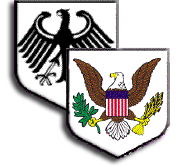Articles and Reviews
Colleen Phillips, Book Review of: Over-the-Rhine Tour Guide, in The Tracer, 33:2 (2012): 60.
There is no denying Cincinnati's German heritage. We say "Please?" (Bitte?), when we need something repeated, hold an annual Oktoberfest and love our brats and beer. Our street names are named Erkenbrecher, Moerlein, Baum, Tafel and Hauck, honoring German immigrants who not only made Cincinnati their home but helped shape the community as well.
German settlers flocked to the area north of the Miami & Erie Canal, earning it the nickname "Over-the-Rhine." It was as if a 213.3-acre section of Germany had been transported to Cincinnati. Not surprisingly, the predominant language spoken, read and written, was German. Biergartens, social clubs, businesses, breweries, schools and churches flourished. Even after German-Americans began leaving the area, it remained their cultural hub. However, the Temperance Movement, the anti-German sentiment of World War I, and Prohibition signaled the beginning of the end for the Germanic community.
The Over-the-Rhine hausfraus who scrubbed their sidewalks on hands and knees are long gone. What remains are the architectural remnants of our German roots, more abundant in the Over-the-Rhine district than any place else in the city. While some buildings can easily be identified thanks to their Germanic inscriptions, others, just as historically significant, can be easily overlooked.
Regardless of whether one's interest in the area is genealogical or historical, one will find Don Heinrich Tolzmann's Over-the-Rhine Tour Guide a treasure trove of information. This book is a concise, well-organized and extensively researched guide to Germanic landmarks of the Over-the-Rhine district. The guide is organized by area, providing addresses and even some photographs. Mr. Tolzmann takes his readers from the West End, to the Central Business District, Over-the-Rhine and to the Hilltop area (West McMicken, West McMillan Avenues).
Cincinnatians may recognize some of the buildings featured in this guide but not know their history. Take, the Germania Build, Walnut and Twelfth Streets, for example.
Lifelong residents may be surprised to learn there's a German inscription at the top of this building, still shielded by a cover placed there during World War I. Or that Dayton Street in the West End was known as "Millionaire's Row" and "Beer Barons' Row" as it was home to the Haucks (Brewery), Hickenloopers (CG&E president) and Wetterers (Germania Brewing Co.), just to name a few. And yes, Virginia, there really WAS a man named Christian Moerlein. And yes, he was a brewer. His homes, located at 2017 Elm Street where the Moerlein family lived until 1882, and 2407 Ohio Avenue, are still standing.
There are many architectural and historical treasures to be found in Cincinnati. Mr. Tolzmann has provided searchers with a very detailed treasure "map."
